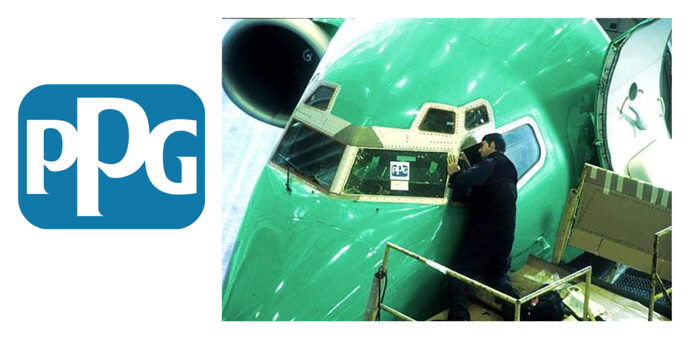PITTSBURGH — To meet an expected increase demand for commercial aircraft parts, Huntsville’s PPG plant is increasing it manufacturing and hiring by nearly 20%, the company announced.
PPG said the aftermarket demand is anticipated to record a compound annual growth rate of 6.21% during the forecast period 2020-2028.
According to Aircraft Electronics Association statistics, the total annual sales of aviation avionics reached $2.73 billion in 2018, up from $2.26 billion in 2016. The International Trade Statistics Database of the United Nations said the United States’ share of aircraft exports reached 29.61% in 2017, up from 18.11% in 2016.
“We’ve benefited from year-over-year improvements in the market,” said Dan Korte, PPG global vice president of Aerospace. “As travelers continue returning to the skies, we are focused on meeting the immediate and longer-term needs of our customers.”
This demand for commercial aerospace aftermarket products such as engines, airframe, interior, cockpit systems and others, will increase manufacturing and increase employment levels by up to 20% at its Huntsville PPG Industries manufacturing facility on U.S. 72. PPG will also increase production at its Sylmar, Calif., facility, the company said.
Among these segments, cockpit systems segment is anticipated to hold the largest market share on account of increasing sales of business and general aviation avionics worldwide observed due to rising technical issues in cockpit systems.
Geographically, North America is anticipated to hold the largest market share on the commercial aircraft aftermarket parts market due to the large number of aging aircraft and a mature aviation market.
Furthermore, the growing exports of parts of aircrafts from the United States and Canada is expected to promote significantly toward the growth of the market in the region in the coming years, the company said.
“With increased employment at our major U.S. manufacturing plants, we can boost our supply throughout our global network of 16 aerospace application support centers,” said Korte. “By further automating our processes at these ASCs, we can quickly ship products directly to our local customers and do our part to help the aviation industry thrive once again.”
There are some concerns however that increasing inventory costs negatively impacting growing operational expenditure, coupled with the replacement of old aircrafts owing to lower fuel efficiency and high maintenance costs, are some of the factors that might hamper the sales of the commercial aircraft aftermarket parts manufacturers.
Don’t miss out! Subscribe to our email newsletter to have all our smart stories delivered to your inbox.



